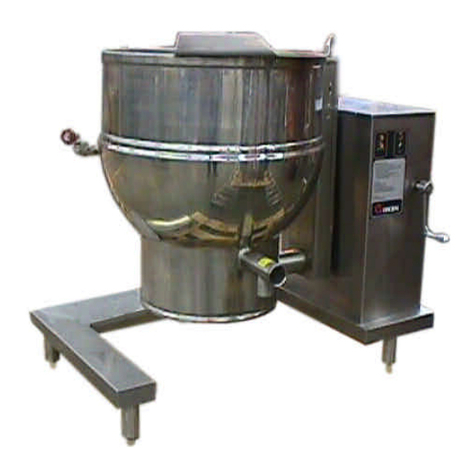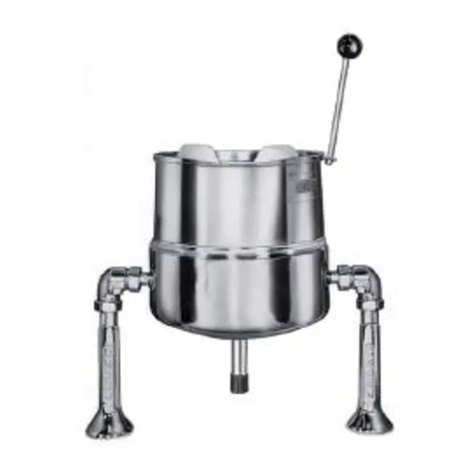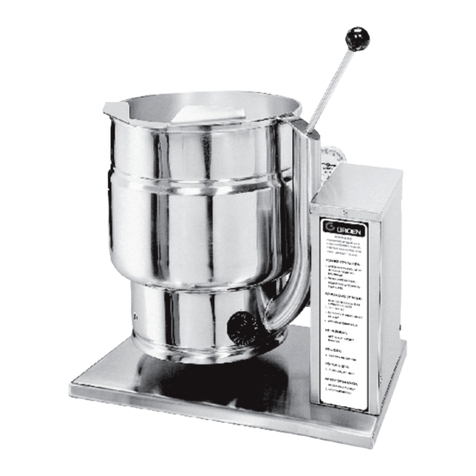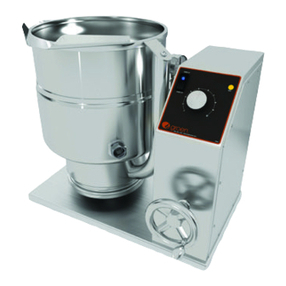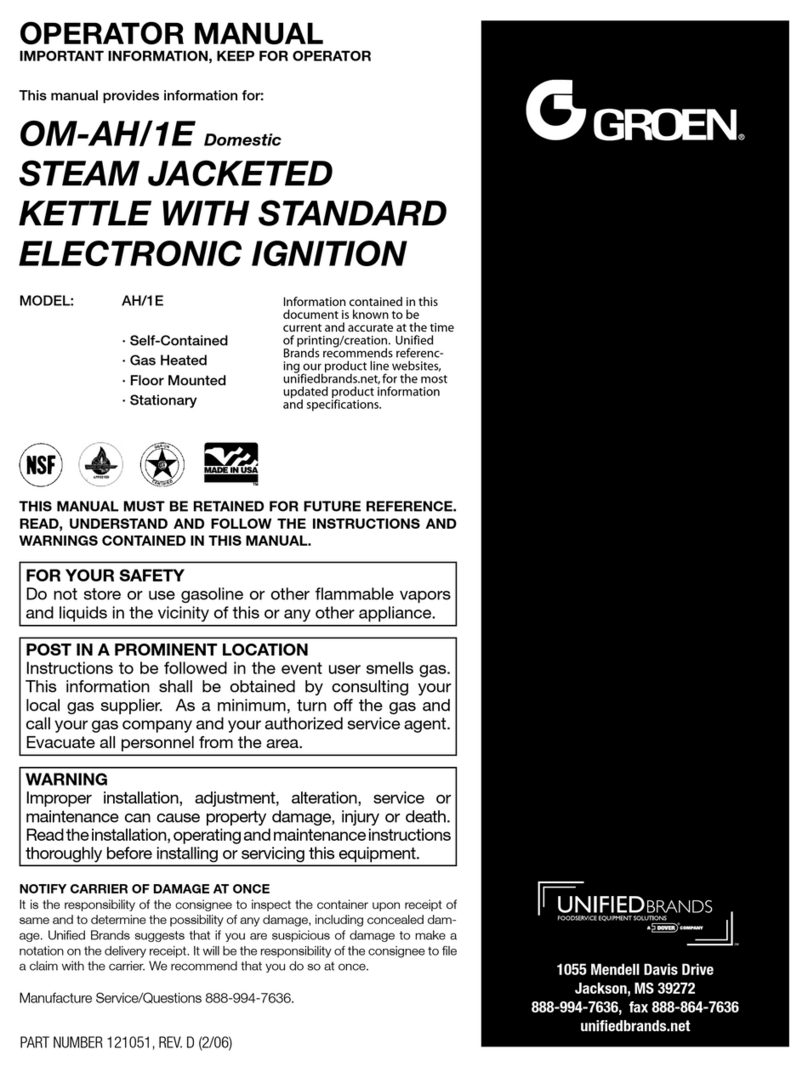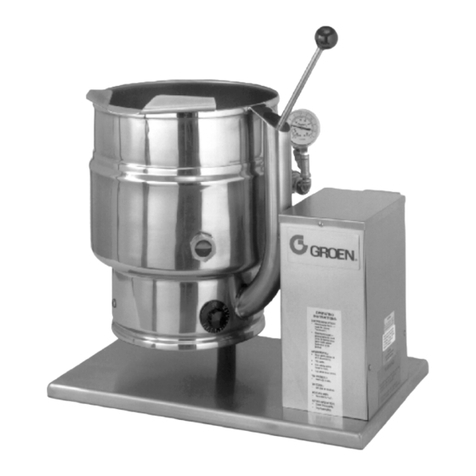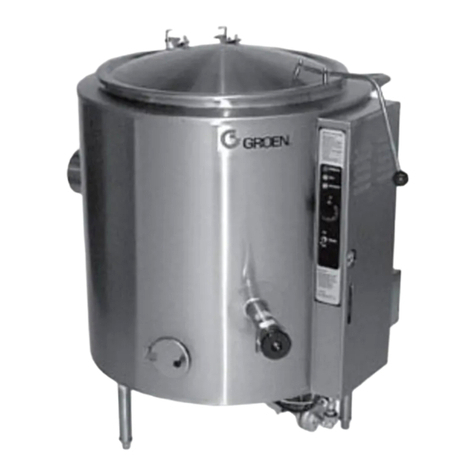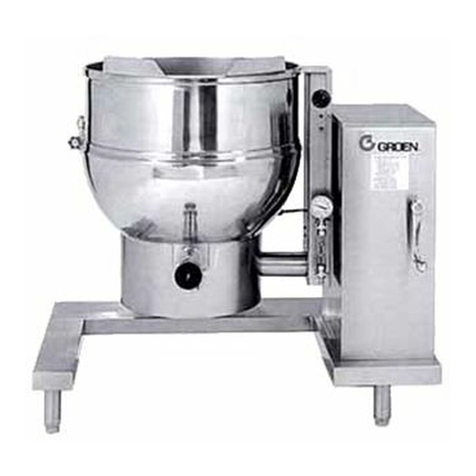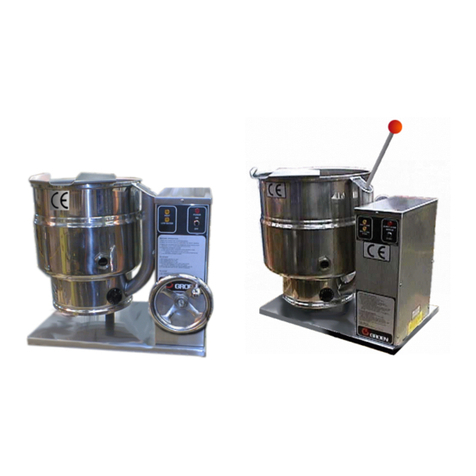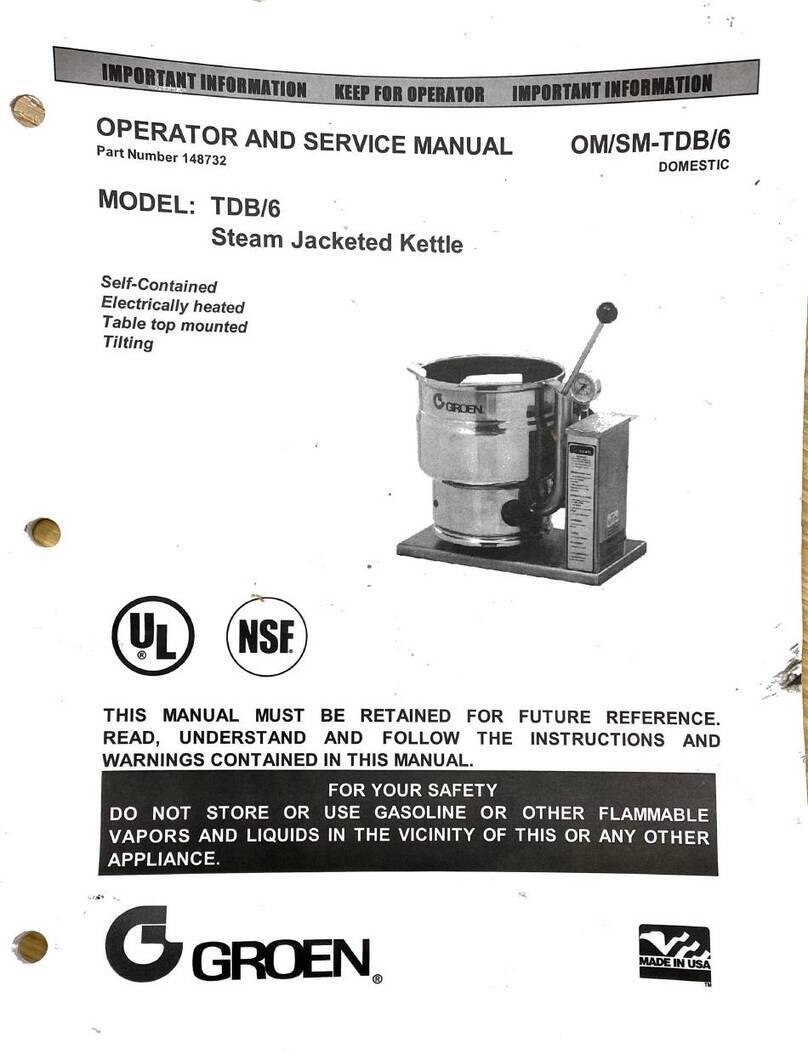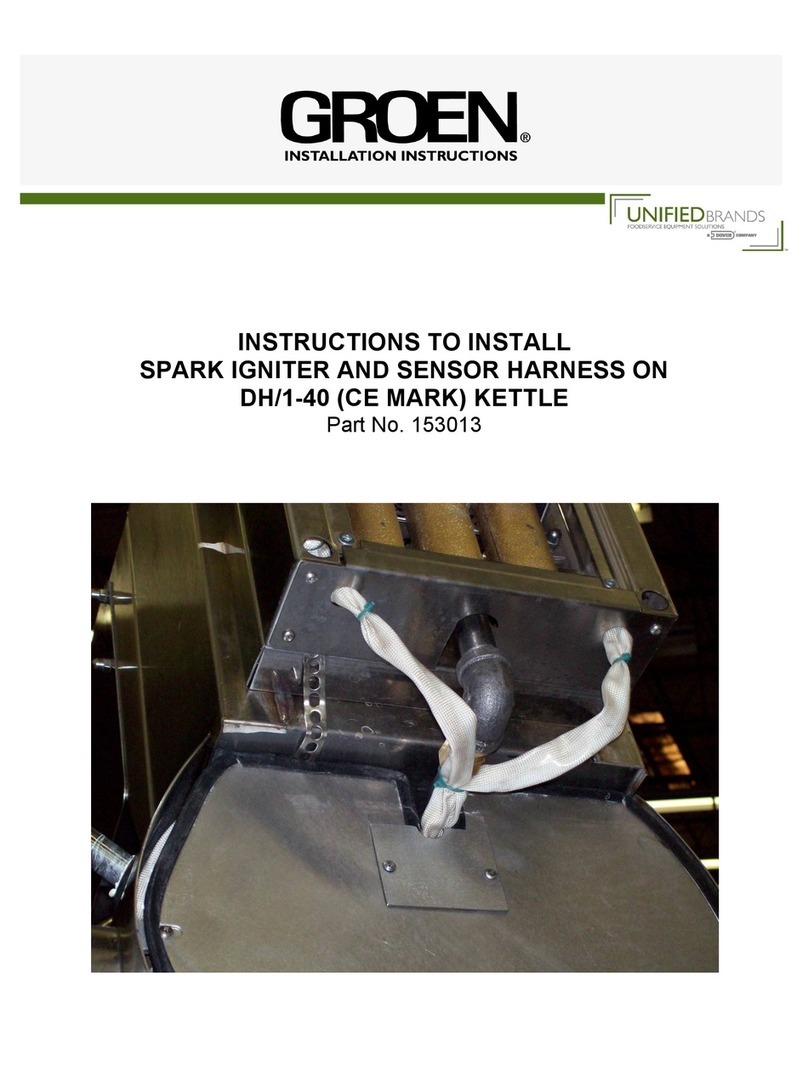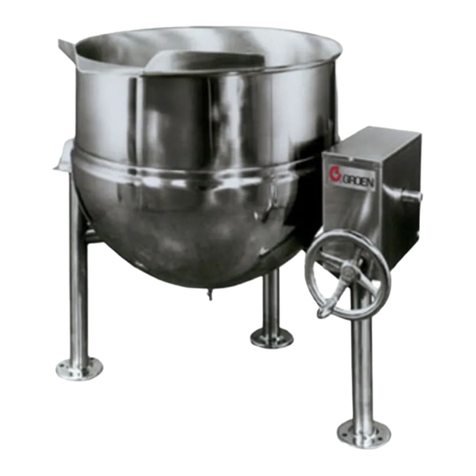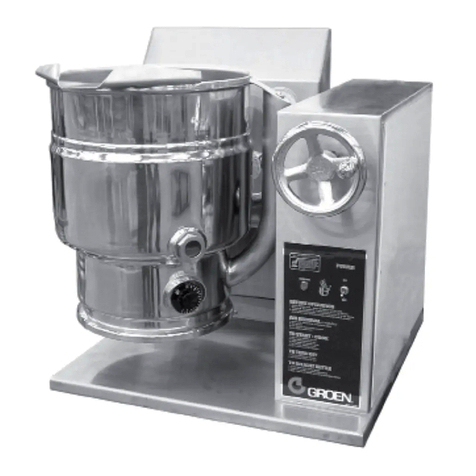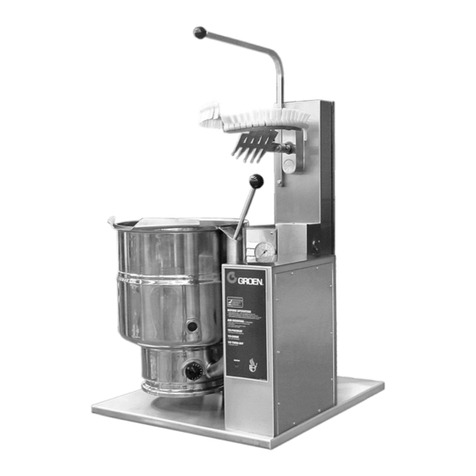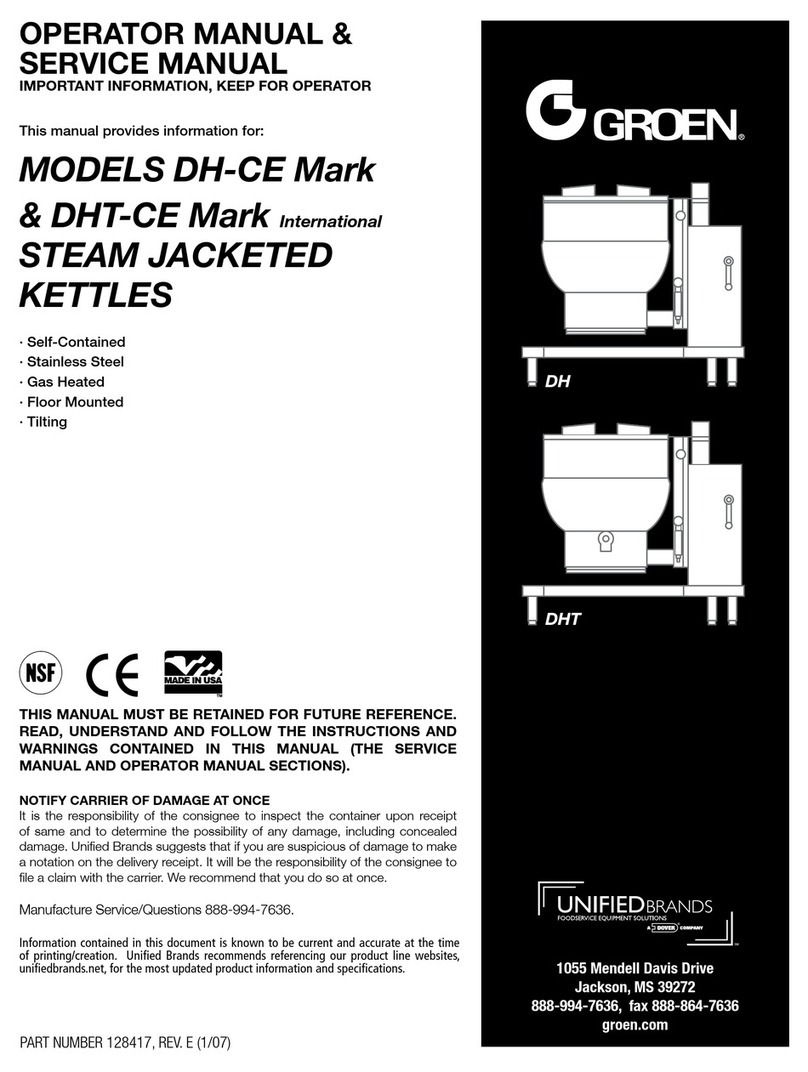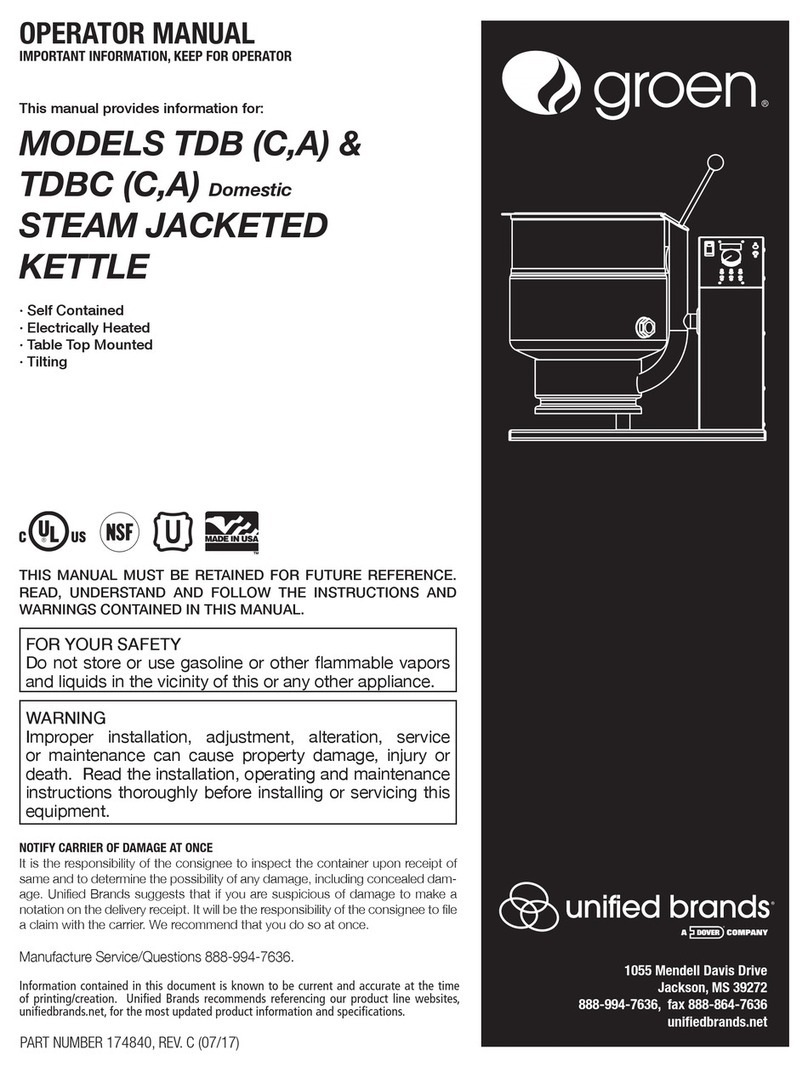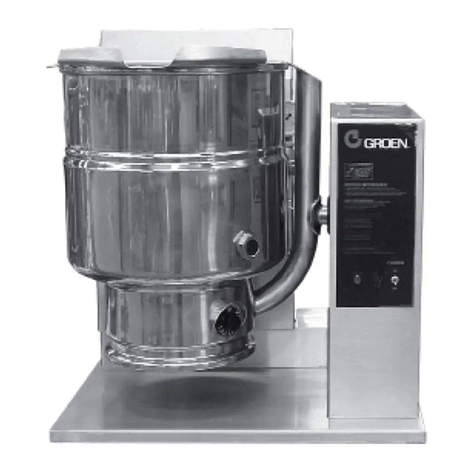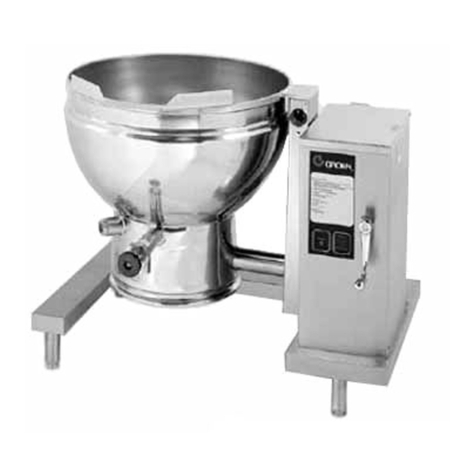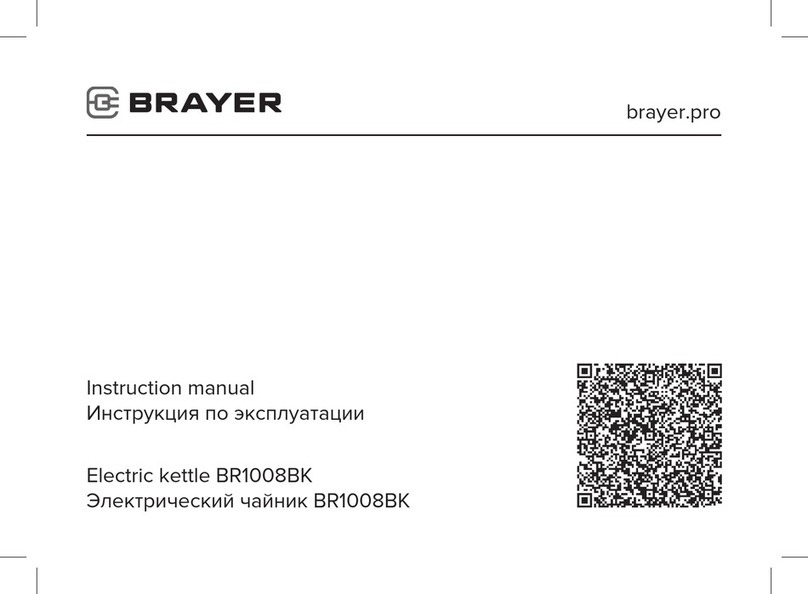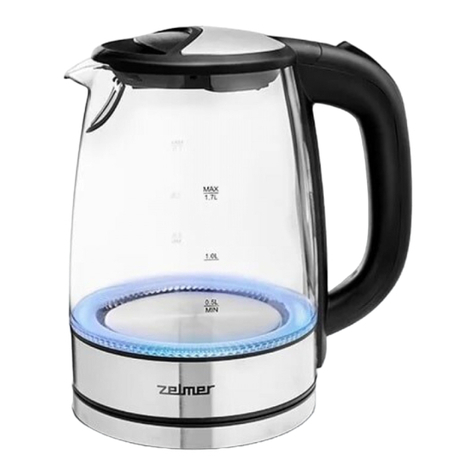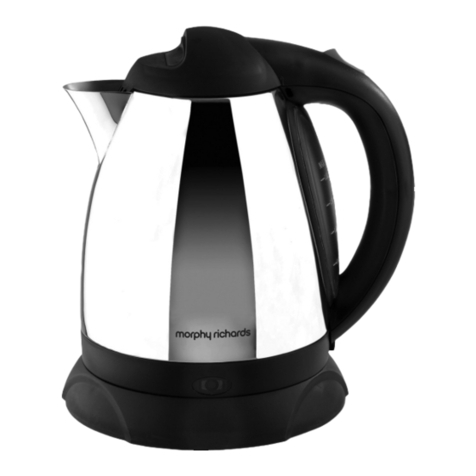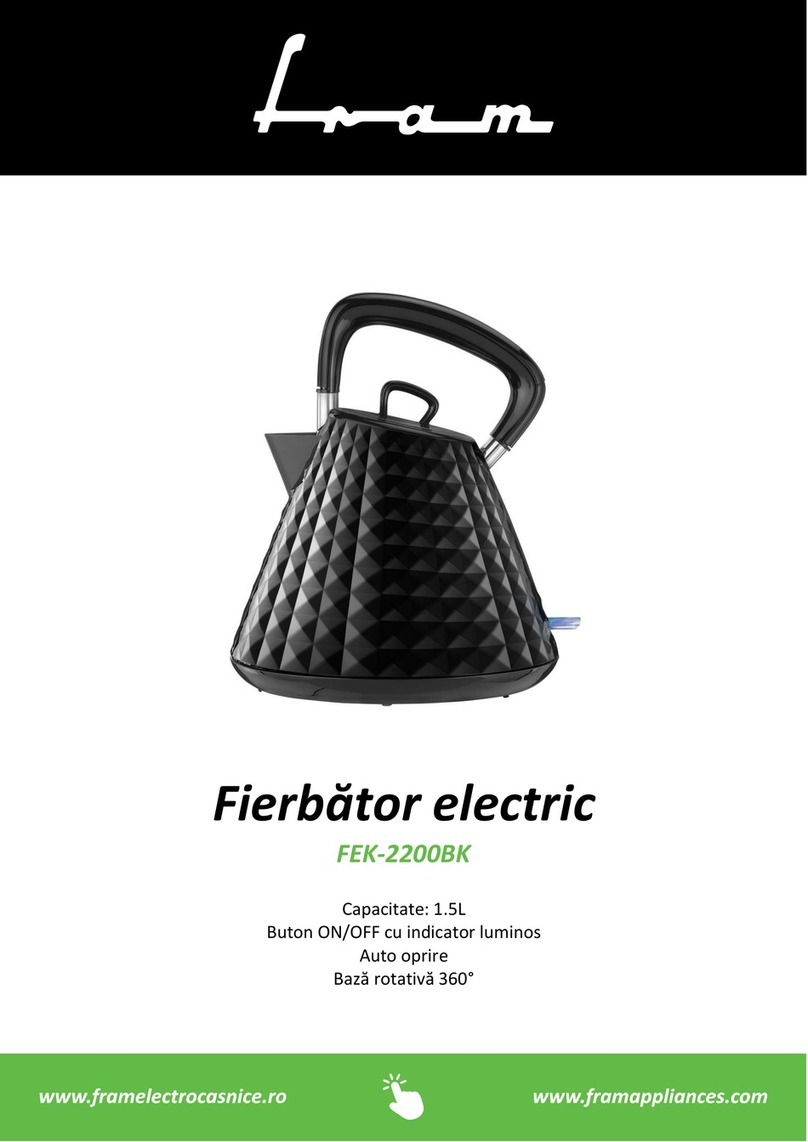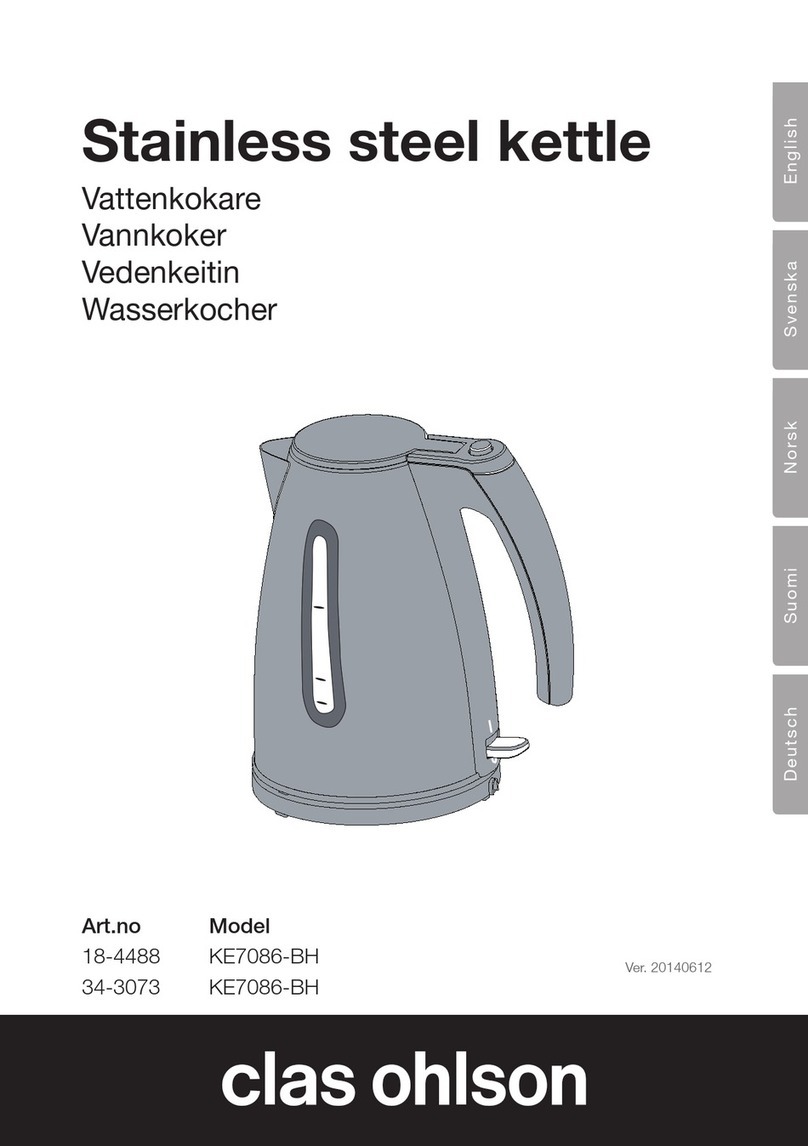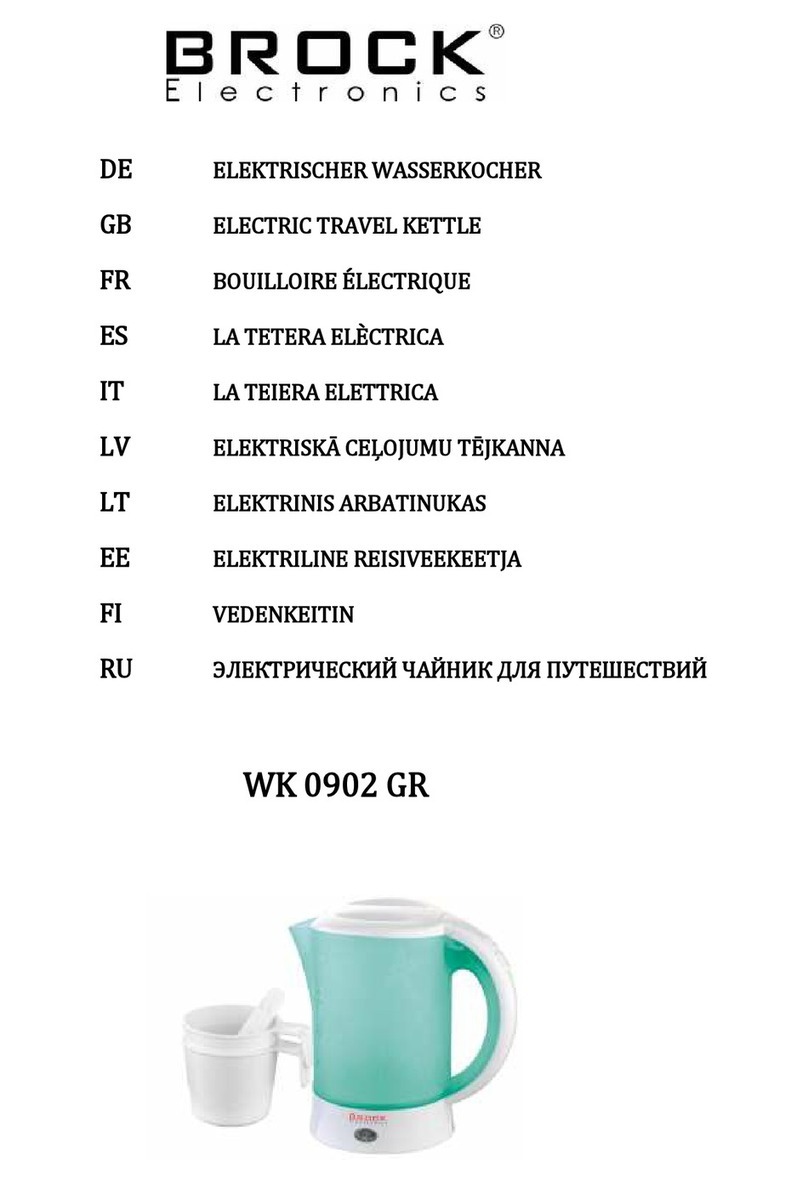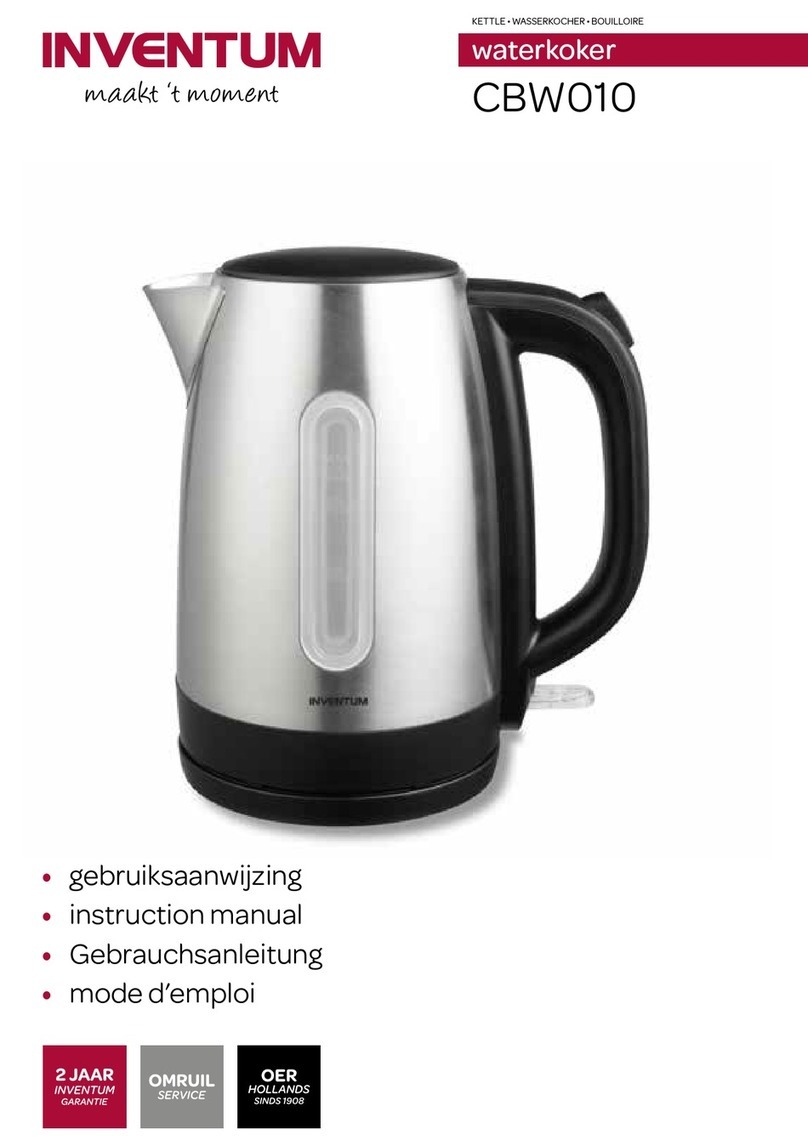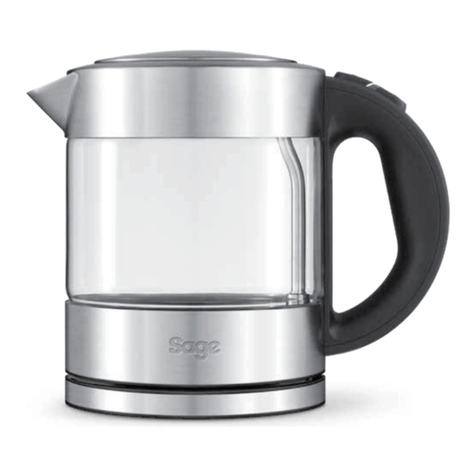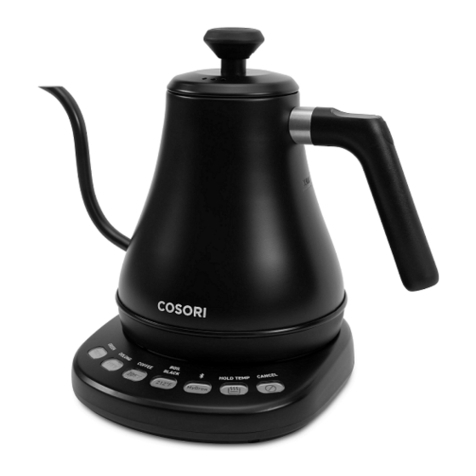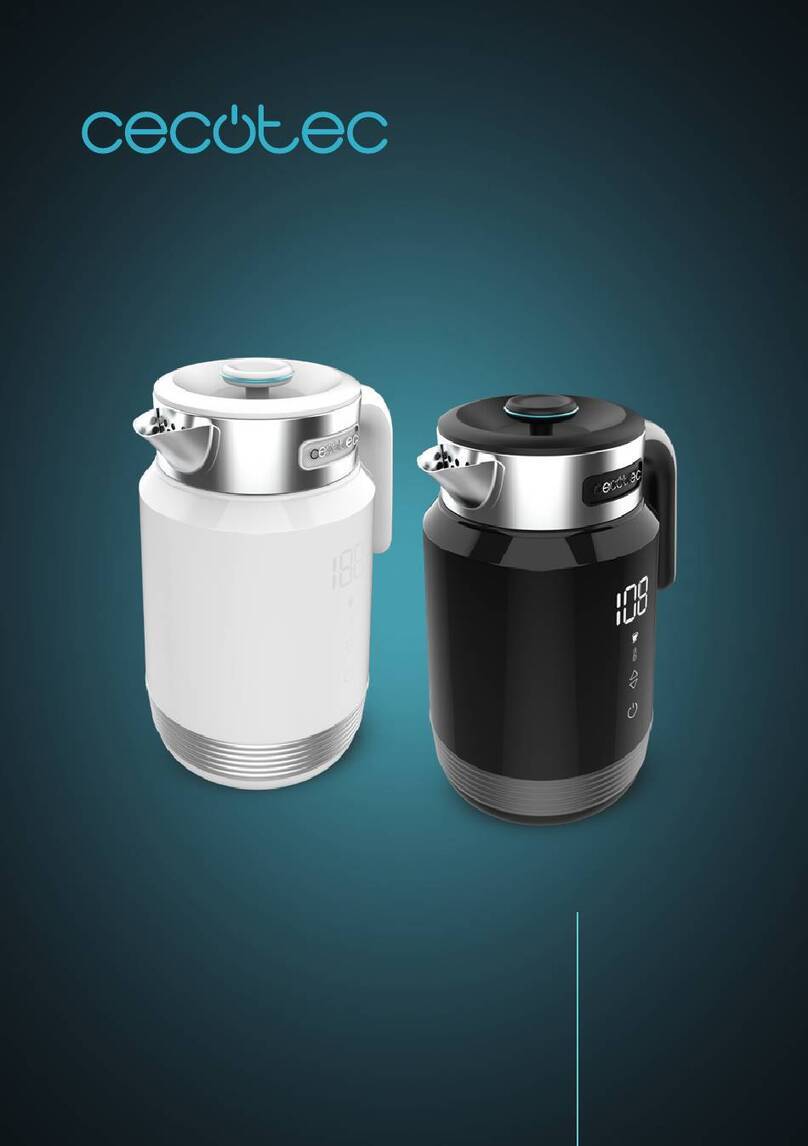
10 OM/SM-DH CE
Section 3
Servicing and Conversion
IMPORTANT
BEFORE ATTEMPTING ANY SERVICING, ENSURE THAT THE ISOLATING COCK IS TURNED OFF
AND CANNOT BE INADVERTENTLY TURNED ON.
ENSURE ALSO THAT THE ELECTRICITY SUPPLY IS DISCONNECTED.
AFTER ANY MAINTENANCE TASK, CHECK THE APPLIANCE TO ENSURE THAT IT PERFORMS
CORRECTLY AND CARRY OUT ANY NECESSARY ADJUSTMENTS AS DETAILED IN SECTION 1.
ALWAYS CHECK FOR GAS SOUNDNESS AFTER CARRYING OUT ANY SERVICING OR EXCHANGE
OF GAS CARRYING COMPONENTS.
NOTE:1. When replacing wiring connections refer to the wiring diagram contained on the unit and within
this manual.
2. When any threaded gas connection is disturbed for any reason, the threads must be resealed with
appropriate gas leak prevention sealant that is suitable for the type of gas. Unified Brands/Groen
recommends gas sealant compound such as Locktite® 243 or Unified Brands part number 122002.
After Servicing
a) Test for gas soundness as specified in
IGE/UP1 as appropriate after any gas
connection has been disturbed.
c) Check for correct operation, as appropriate
b) If leaks are found, disconnect the mating parts,
clean the threads and apply recommended
sealant as specified in Note 2 above.
(see commissioning of appliance).
WARNING - Do not leave any wood splinter
or bristles from brush in the burner or injector.
Fire could result.
Regular Servicing Procedures
The following must be serviced at regular intervals.
Burners
The burner should be cleaned periodically to
maintain maximum performance. Burners are
best cleaned with a wire brush and any blocked
parts are best cleaned with a metal broach,
taking care not to damage the burner head.
The injector orifice should be cleaned with a
wooden splinter. Metal reamers may distort or
increase the orifice size and should be avoided.
WARNING - Do not leave any wood splinter
or bristles from brush in the burner or injector.
Fire could result.
Gears
The gear housing has fitting for proper
lubrication of moving parts. The gears do not run
in oil, periodic lubrication with grease is
necessary. Frequency of lubrication will depend
on operating conditions, but it should be
performed at least once every 6 months. It is
liberal amount of grease on the gear to cover the
arc that is in contact with the worm gear.
Safety Valve (Steam)
At least twice a month the safety valve requires
checking to make sure it works correctly. When
the gauge pressure is about five PSI, lift the
valve lever enough to vent steam, then quickly
let it snap back into place.
WARNING
AVOID ANY EXPOSURE TO THE STEAM
BLOWING OUT OF THE SAFETY VALVE.
This procedure should be explained to the user,
since it is to be carried out at least twice a
month. Safety procedures and requirements
should also be explained to the user when
carrying out the procedure.
Safety Valve Operating Instructions
If adding water to the boiling pan jacket,
DO NOT ALLOW
water to flow through safety valve as sediment or
debris may be deposited on seating surface.
To achieve topmost performance and maximum
service life, it is necessary to maintain a proper
pressure margin between set pressure of the
safety valve and equipment operating pressure.
recommended that a #2 grade LGI lithium
grease be used. Add grease through the Zerk
fittings on the gear housing until grease flows out
of bearings around the trunnion shaft. Place a
